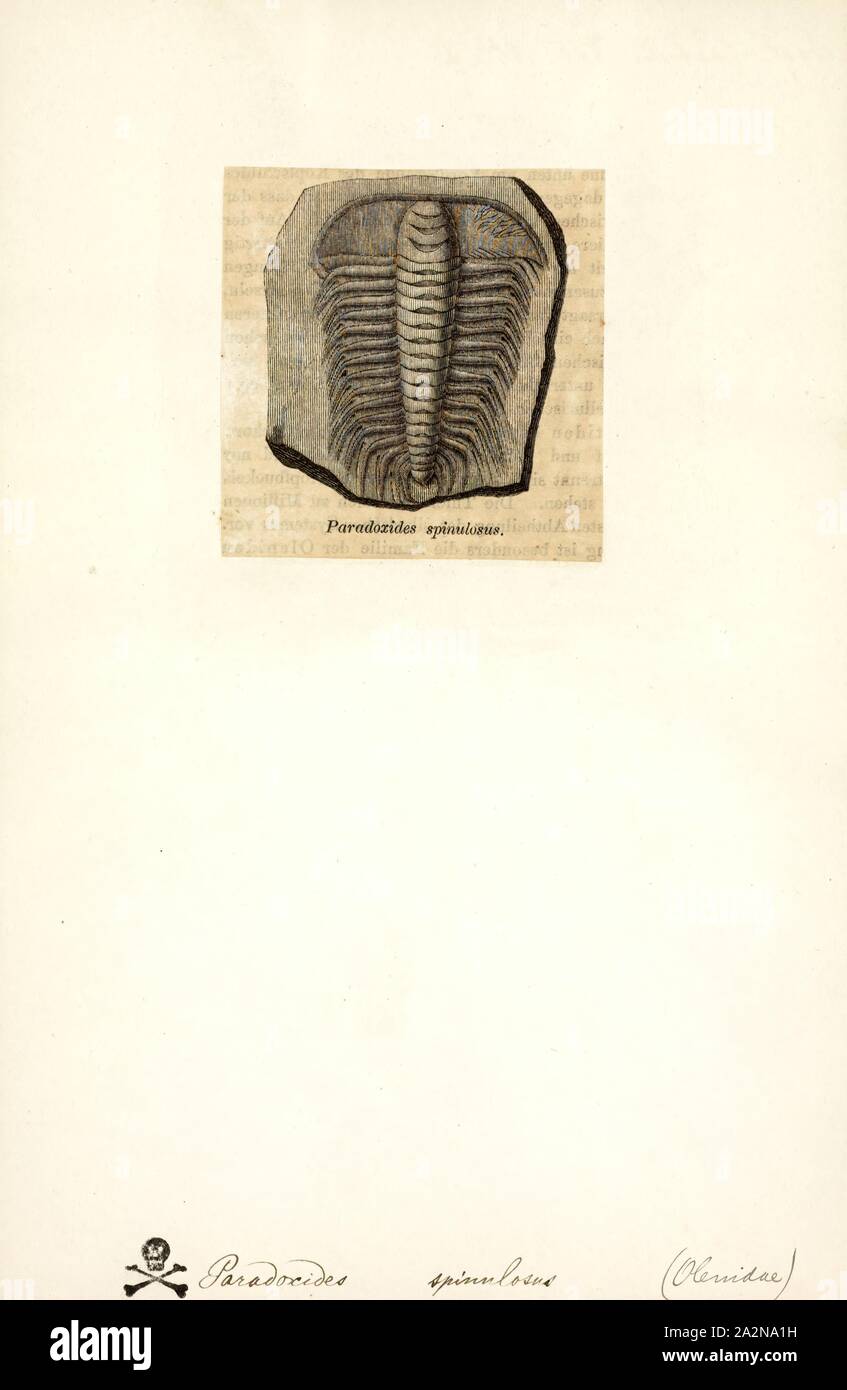Paradoxides spinulosus, Print, Paradoxides is a genus of large to very large trilobites found throughout the world during the Mid Cambrian period. One record-breaking specimen of Paradoxides davidis is 37 cm (15 in). It has a semicircular head, free cheeks each ending with a long, narrow, recurved spine, and sickle-shaped eyes, providing almost 360° view, but only in the horizontal plane. Its elongated trunk was composed of 19-21 segments and was adorned with longish, recurved lateral spines. Its pygidium (caudal shield) was comparatively small. Paradoxides is a characteristic Middle Cambrian

Image details
Contributor:
Penta Springs Limited / Alamy Stock PhotoImage ID:
2A2NA1HFile size:
49.2 MB (753.4 KB Compressed download)Releases:
Model - no | Property - noDo I need a release?Dimensions:
3350 x 5136 px | 28.4 x 43.5 cm | 11.2 x 17.1 inches | 300dpiPhotographer:
ArtokoloroMore information:
This image could have imperfections as it’s either historical or reportage.
Paradoxides spinulosus, Print, Paradoxides is a genus of large to very large trilobites found throughout the world during the Mid Cambrian period. One record-breaking specimen of Paradoxides davidis is 37 cm (15 in). It has a semicircular head, free cheeks each ending with a long, narrow, recurved spine, and sickle-shaped eyes, providing almost 360° view, but only in the horizontal plane. Its elongated trunk was composed of 19-21 segments and was adorned with longish, recurved lateral spines. Its pygidium (caudal shield) was comparatively small. Paradoxides is a characteristic Middle Cambrian trilobite of the 'Atlantic' (Avalonian) fauna. Avalonian rocks were deposited near a small continent called Avalonia in the Paleozoic Iapetus Ocean. Avalonian beds are now in a narrow strip along the East Coast of North America, and in Europe.